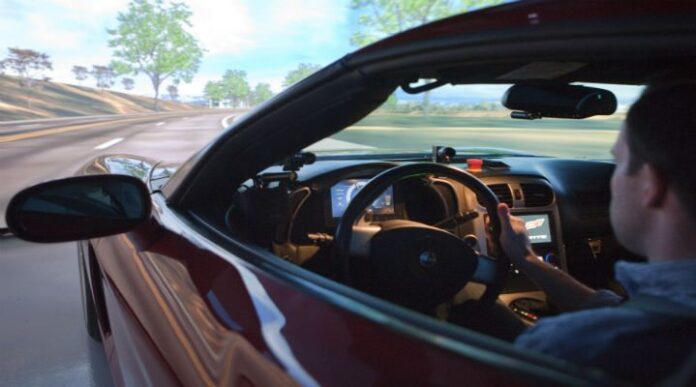Editor’s Note: Welcome to our weekly Reality Check column where C-level executives and advisory firms from across the mobile industry share unique insights and experiences.
The automotive industry is on the verge of its biggest transformation in over a century – and it’s all down to wireless connectivity. Connected cars are set to revolutionize the industry as we know it as telecom operators help make the concept of the “Internet of Things” a reality.
The overall number of automotive vehicles with built-in connectivity is expected to make up 90% of the total market by 2020. Wireless technology is creating a seismic shift in the way cars are manufactured, sold and consumed.
Until now, the term “connected car” has largely been an industry buzzword, but it looks as though consumers are beginning to appreciate the value that connectivity can bring. Drivers will be able to check the performance and health of their vehicle in real time and instantly diagnose their vehicle; they will be notified if their cars are moved unexpectedly; and benefit from extra functionality such as Internet radio and other Web-enabled “infotainment” services.
Our recent research into this area suggests consumers are more than ready to embrace the connected car revolution, too, with 80% of consumers believing in-car connectivity will provide the same kind of connected experience they are currently used to at home or on their smartphone.
But, while the prospect of connectivity in cars is much talked about and users seem to be encouraging telcos with increased interest, what features will connectivity actually be able to provide?
One of the most important areas to be improved by wireless technology is safety and diagnostics. Although it may not strike you as the most exciting feature connected technology could deliver, research has shown that increasing safety is a paramount concern for drivers, with 73% citing it as the most important feature they’d look for in a connected car. It is also something car manufacturers and telcos are likely to focus on in the immediate future.
In the European Union the ECall mandate, requiring all new vehicles to have pre-installed devices that will automatically dial emergency services in the event of an accident, will come into effect in 2015. The device will send vital data such as the time and location of an incident to the rescue services, meaning drivers will be closer to help, no matter where they are in the EU. It’s expected to improve emergency response times by up to 50%.
The automotive industry also will be transformed by the masses of data that will be produced through wireless connectivity. A single vehicle can produce terabytes-worth of rich data. IGR predicts the annual mobile data usage generated by connected cars is expected to grow almost 188% in the next five years. Car companies and telcos that are versed in big data will be able to use the data to make incremental improvements to services.
Dealer networks, for example, generate most of their profits from servicing rather than sales, but once a vehicle is out of warranty, customers tend to go elsewhere. Car manufacturers can change this mind-set by using data generated by connected diagnostic services in the car to allow dealerships to contact drivers proactively and flag issues with the vehicle.
Looking further into the future, the possibilities opened up as wireless and vehicle technologies converge are almost limitless.
In-vehicle connectivity could have a dramatic effect on the way emergency services operate, for example. In a wireless-enabled ambulance, paramedics could use video calling to digitally share images of the vehicle incident with a consultant back at the hospital and receive guidance. This has the potential to extend the “golden hour” – the period of time where medical treatment will most likely prevent a severe or fatal result – to a “golden hour-and-a-half,” which would unquestionably save many lives.
Meanwhile, when autonomous cars finally become a reality there will be an opportunity to use in-car connectivity in entirely different ways. The car will become an extension of the office or the living room. People will be able to stream movies or video conference with friends or colleagues, while their car takes them to their destination.
The culmination of these technologies could manifest itself in the “self-learning car” – a vehicle that combines real-time updates, personal information and contextual data to create a highly personalized driving experience. This car would host an artificial intelligence system on board that will constantly learn from the user’s daily behavior, and is able to adapt the experience accordingly. No longer would you need to program the navigation system to guide you to your favorite restaurant – it already knows you’re likely to go there and proactively suggests it.
Make no mistake, connectivity is already here in many forms. Products offering connected features in existing cars are already available. Plug-and-play services that bolt onto ordinary cars to “upgrade” them to connected cars is an area in which we at Telefónica are already making advances. The potential for connectivity in new and existing cars is huge, with the car feasibly becoming a user experience like never before. This will bring new-age opportunities of connectivity to the proud tradition of the car – and we’re only just moving off of the starting line.
We can expect to see a gradual creep of connectivity into vehicles over the next few years, but there won’t be an explosion over the next 12 months. The reason for this lies in the complexity of the challenges that wireless connectivity is trying to address. While automotive OEMs still have a way to go before they break out of their traditional role as a manufacturer and become a full, connected service provider, they certainly have a strong, trusted base to build from.
Surya Mendonca is a mechanical engineer with an MBA from Harvard Business School. He joined Telefonica in 2001 and has held a variety of strategic and commercial roles, including marketing director fixed SME in LatAm, marketing director fixed SME and residential in Brazil and marketing director mobile prepaid in Brazil. Before Telefonica, he was a consultant for McKinsey & Co. and worked in an Internet start-up in Brazil. Currently, Mendonca is globally responsible for Telefonica’s M2M business, including connectivity, horizontal global platforms and vertical services (fleet management, connected car, utilities and industry solutions).


